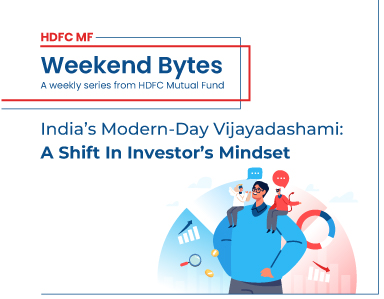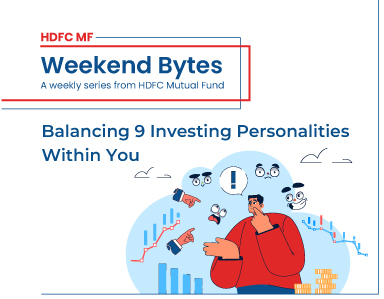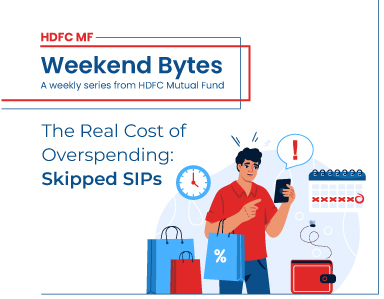Weekend Bytes

The Real Cost of Skipping SIPs: Missing out on Market Opportunities
Just like a heartbeat, the market pulses with ups and downs.
Volatility is a part and parcel of investing. Yet, it’s also the biggest test of investor’s discipline. When markets swing, the instinct to protect capital often drives investors to pause or stop their SIPs. But here’s the paradox: The very period that seems most uncertain may often be the best time to invest.
Let’s understand this using the below chart and the stories of three individuals – All SIP investors with Monthly SIP of Rs 10,000 in HDFC Flexi Cap Fund who made very different decisions between September 2024 to April 2025.
NAV for HDFC Flexi Cap Fund – Regular Growth Plan considered.
SIP – Systematic Investment Plan, NAV – Net Asset Value
Now let’s understand how different investors behaved during this period
Om: The Pause-and-Watch Investor
Om was investing consistently until November 2024. But after seeing the fund’s NAV drop from its October high (~Rs 1953 to ~ Rs 1877), he decided to pause his SIP from December 2024, expecting further falls.
His fear came true – the market did fall further. But by staying out from December 2024 to March 2025, he missed March’s low point – The perfect chance to accumulate units at lower NAV.
When markets started to recover in April 2025, he resumed his SIPs. As NAV had bounced back, he bought fewer units for the same investment.
Outcome: Om tried to reduce risk but ended up skipping the most rewarding phase for long-term investors.
Jai: The Early Exit Investor
Jai stayed invested through the initial volatility but by January 2025, continued market declines shook his confidence. Worried about further losses, he redeemed his SIP investments in February 2025, fearing further losses.
Unfortunately, the timing worked against him. Just weeks later, in March 2025, the NAV touched a low of ~Rs 1735 – a point where his SIP could have bought the maximum number of units. This period is highlighted on the chart as a “Missed Opportunity”
Outcome: Jai’s decision to exit during downturn cost him in two ways – Missing lower entry prices and losing out on recovery. It’s a clear example of how short-term fears can derail long-term plans.
Jagdish: The Disciplined Investor
Jagdish continued his SIP from September 2024 till April 2025, unaffected by market’s short-term volatility.
As the NAV fluctuated, his SIPs bought more units during market lows and fewer during highs. His biggest gain came in March 2025, when his SIP bought the most units due to low NAV.
When the NAVs recovered in April, Jagdish already had a better base of accumulated units – enhancing his long-term compounding potential.
Outcome: Jagdish’s consistency allowed him to benefit from rupee cost averaging and market recovery- without any need to time the market.
The best time to invest is when it feels hardest. That’s when markets offer the most value. Pausing SIPs during dips may feel safe – But it could cost you more in the long run. Stay the course. Let volatility work for you, not against you.
Note: The information herein is for general purposes only. The recipient(s) should before taking any decision, make their own investigation and seek appropriate professional advice.
MUTUAL FUND INVESTMENTS ARE SUBJECT TO MARKET RISKS, READ ALL SCHEME RELATED DOCUMENTS CAREFULLY.


